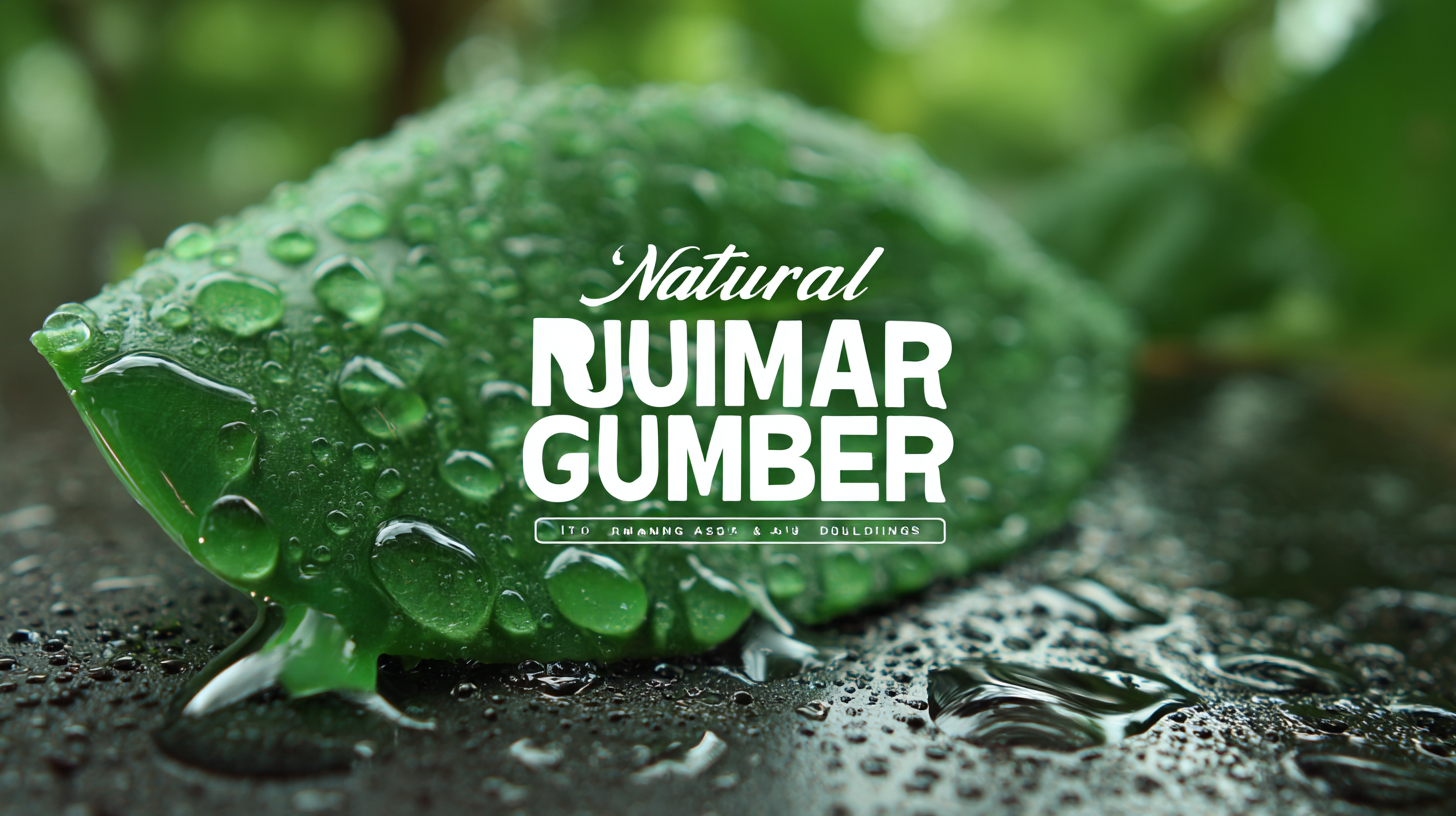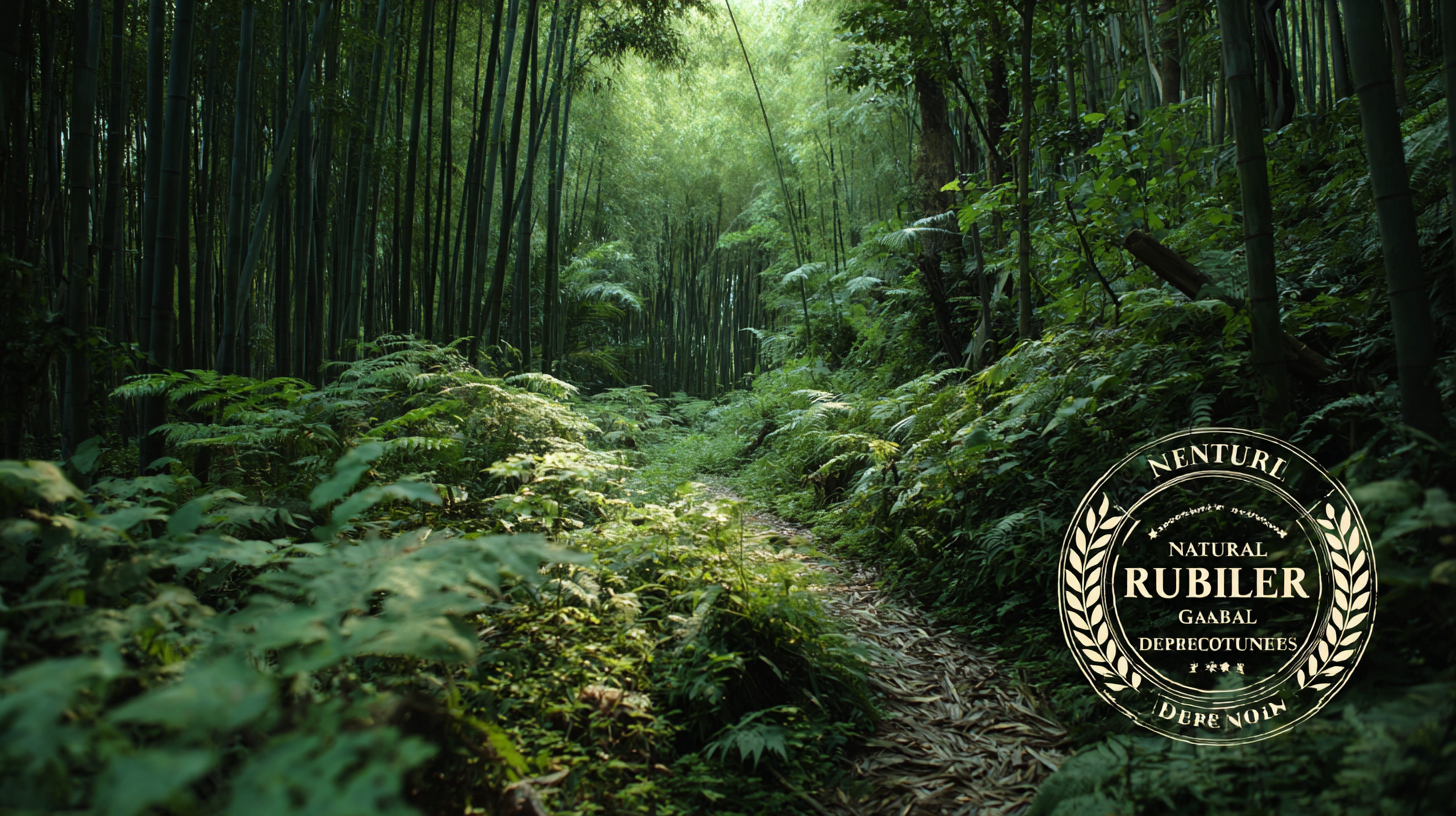Exploring Sustainable Alternatives to Best Natural Gum Rubber for Global Buyers
As global awareness of environmental sustainability continues to rise, the demand for Natural Gum Rubber has gained unprecedented attention. According to a report by the International Rubber Study Group, the global natural rubber market is projected to reach approximately 17 million tons by 2025, driven by increasing consumer preference for eco-friendly products. However, the environmental impact of traditional rubber production—ranging from deforestation to significant carbon emissions—has sparked a pressing need for sustainable alternatives. This blog aims to explore innovative and sustainable substitutes for Natural Gum Rubber that can cater to the needs of global buyers, highlighting the potential for reduced ecological footprints while maintaining product performance and quality. With the industry's shift towards sustainability, understanding these alternatives is not just advantageous, but essential for a resilient and responsible rubber marketplace.

Sustainable Sourcing: The Rise of Alternative Natural Gums in 2025
As we move into 2025, the global market is witnessing a significant shift towards sustainable sourcing practices, particularly in the realm of natural gum rubber. With growing awareness about environmental issues, buyers are increasingly looking for alternatives that not only meet their performance needs but also align with their sustainability goals. This transformative approach not only mitigates environmental impacts but also supports local communities engaged in the production of these sustainable materials.
Various alternative natural gums are rising to prominence, offering unique properties that can compete with traditional gum rubber. Innovations in agricultural practices, such as agroforestry and regenerative farming, are being adopted to ensure that these alternatives are produced sustainably. As companies pivot toward these greener options, they are challenged to maintain the quality and performance standards expected in the marketplace. However, the drive for change is compelling, leading to the emergence of responsible sourcing initiatives that connect producers with eco-conscious buyers, fostering a more sustainable production cycle throughout the industry.

The Impact of Technology on Natural Gum Production: Trends and Innovations
The move towards sustainable alternatives in natural gum rubber production is significantly influenced by advancements in technology. As the global market for organic sealing agents is projected to grow from $150 million in 2022 to $320 million by 2030, driven by a compound annual growth rate of 9.8%, the rubber industry is also adapting to these trends.
Notably, technologies are emerging that enhance production efficiencies, making sustainable practices more viable across the sector. A striking development is the push towards natural latex extraction from sustainable sources, such as certain North American plants, which could alleviate pressure on traditional rubber supplies.
Furthermore, innovations in the recycling of rubber are noteworthy; in China, recycled rubber production accounts for 73% of the world's total, showcasing the potential of circular economies in this sector. The tire manufacturing industry, which consumes about 70% of the global natural rubber supply, must embrace these technologies to respond to sustainability demands effectively.
As we move into a new era of rubber production, understanding these trends will be crucial for stakeholders.
Tip: To stay ahead in the rubber industry, consider investing in new technologies that focus on sustainability, as they not only enhance production efficiency but also align with growing consumer and regulatory demands.
Tip: Engage in collaborations with research institutions to explore alternative sources of rubber and innovative recycling methods, which could provide competitive advantages in an evolving market.
Market Demand for Eco-Friendly Rubber: Insights and Projections for Global Buyers
The market demand for eco-friendly rubber alternatives is steadily rising as global buyers become increasingly conscious of sustainability. Recent studies indicate a significant shift towards greener materials, with market analysts predicting robust growth in various sectors. For instance, the Global Green and Bio Polyols Market is on the rise, reflecting the growing preference for renewable resources, paralleling trends noted in the Green Tires Market, which is projected to grow from approximately USD 26 billion in 2023 to around USD 73.82 billion by 2033. This represents a substantial opportunity for stakeholders in the rubber industry to explore sustainable options and cater to evolving consumer demands.
**Tip:** When sourcing eco-friendly rubber products, consider certifications that confirm sustainability practices. Look for suppliers who prioritize transparency in their materials' origin and production processes.
Furthermore, as industries like chemical manufacturing pivot towards sustainability, the focus on resilience and efficiency will drive innovations in rubber production as well. With the global Industrial V Belts Market expected to grow from USD 136.1 million in 2025 to USD 251.1 million by 2035, there is a clear indication that adopting sustainable practices can lead to considerable economic benefits.
**Tip:** Engage with industry reports and market research studies to stay informed about emerging trends and technologies in sustainable rubber production, enabling informed decision-making for investments and partnerships.
Market Demand for Eco-Friendly Rubber Alternatives (2023 Projections)
Evaluating the Environmental Benefits of Sustainable Gum Rubber Options
When evaluating sustainable alternatives to traditional gum rubber, it's essential to consider the environmental benefits of these materials. According to a report by the Global Rubber Alliance, natural rubber production can lead to significant deforestation, with approximately 1.6 million hectares of forest cleared for rubber plantations in Southeast Asia alone. Sustainable gum rubber options, such as those derived from responsibly managed plantations, can mitigate these effects by promoting biodiversity and reducing carbon footprints.
Moreover, using sustainable gum rubber can lead to a notable decrease in greenhouse gas emissions. A study by the International Council of Rubber Producers found that sustainably sourced rubber can reduce emissions by up to 40% compared to conventional practices. This is achieved through improved land management and the use of agroforestry techniques, which integrate rubber production with other crops and forest products.
Tips: When sourcing gum rubber, prioritize suppliers who are certified by recognized environmental organizations. Look for labels that indicate compliance with sustainable practices, such as the Forest Stewardship Council (FSC) or the Rainforest Alliance. Additionally, consider supporting companies that invest in local communities and environmental restoration projects, as this can amplify the positive impact of your purchase. Sustainable choices not only benefit the planet but can also lead to long-term economic advantages for businesses and consumers alike.
Exploring Sustainable Alternatives to Best Natural Gum Rubber for Global Buyers - Evaluating the Environmental Benefits of Sustainable Gum Rubber Options
| Alternative Type | Source | Environmental Benefit | Carbon Footprint Reduction (%) | Biodegradability (Years) |
|---|---|---|---|---|
| Synthetic Rubber from Recycled Materials | Industrial Waste | Reduces landfill waste | 30 | 50 |
| Natural Fiber Composite | Plant Fibers | Alleviates deforestation | 25 | 3-5 |
| Biodegradable Synthetic Rubber | Bio-based Resources | Lower fossil fuel consumption | 20 | 2-4 |
| Sustainable Tapping Techniques | Natural Rubber Trees | Promotes biodiversity | 15 | 10-20 |
Navigating Regulatory Challenges in the Natural Rubber Industry: A 2025 Perspective
As the natural rubber industry evolves, navigating regulatory challenges remains a pressing issue for global buyers. By 2025, stricter environmental policies and sustainability mandates are expected to significantly impact how natural rubber is sourced and produced. Companies must stay ahead of upcoming regulations that prioritize eco-friendly practices and fair labor conditions, ensuring compliance while satisfying market demands. Understanding these regulatory landscapes is crucial for businesses looking to maintain their competitive edge in an increasingly conscientious marketplace.
Moreover, with rising consumer awareness about sustainability, the expectation for transparency throughout the supply chain is heightened. Buyers must engage with suppliers who not only adhere to regulations but also actively promote sustainable farming practices. This shift not only meets regulatory demands but also aligns with consumer values, facilitating a market that favors responsible sourcing. As industries within the rubber sector respond to these challenges, innovation in sustainable practices will become key to success, enabling businesses to thrive while fostering environmental stewardship.


